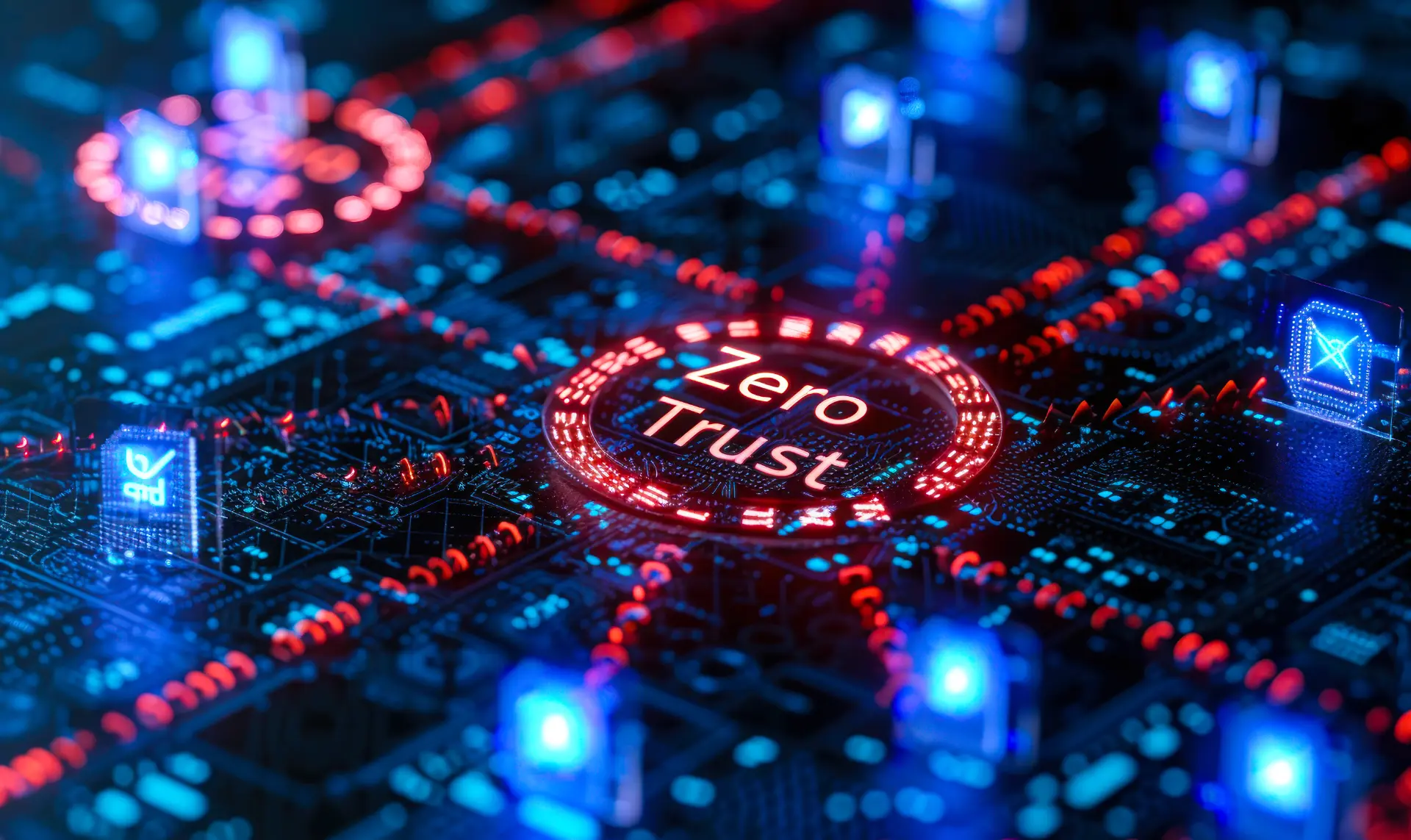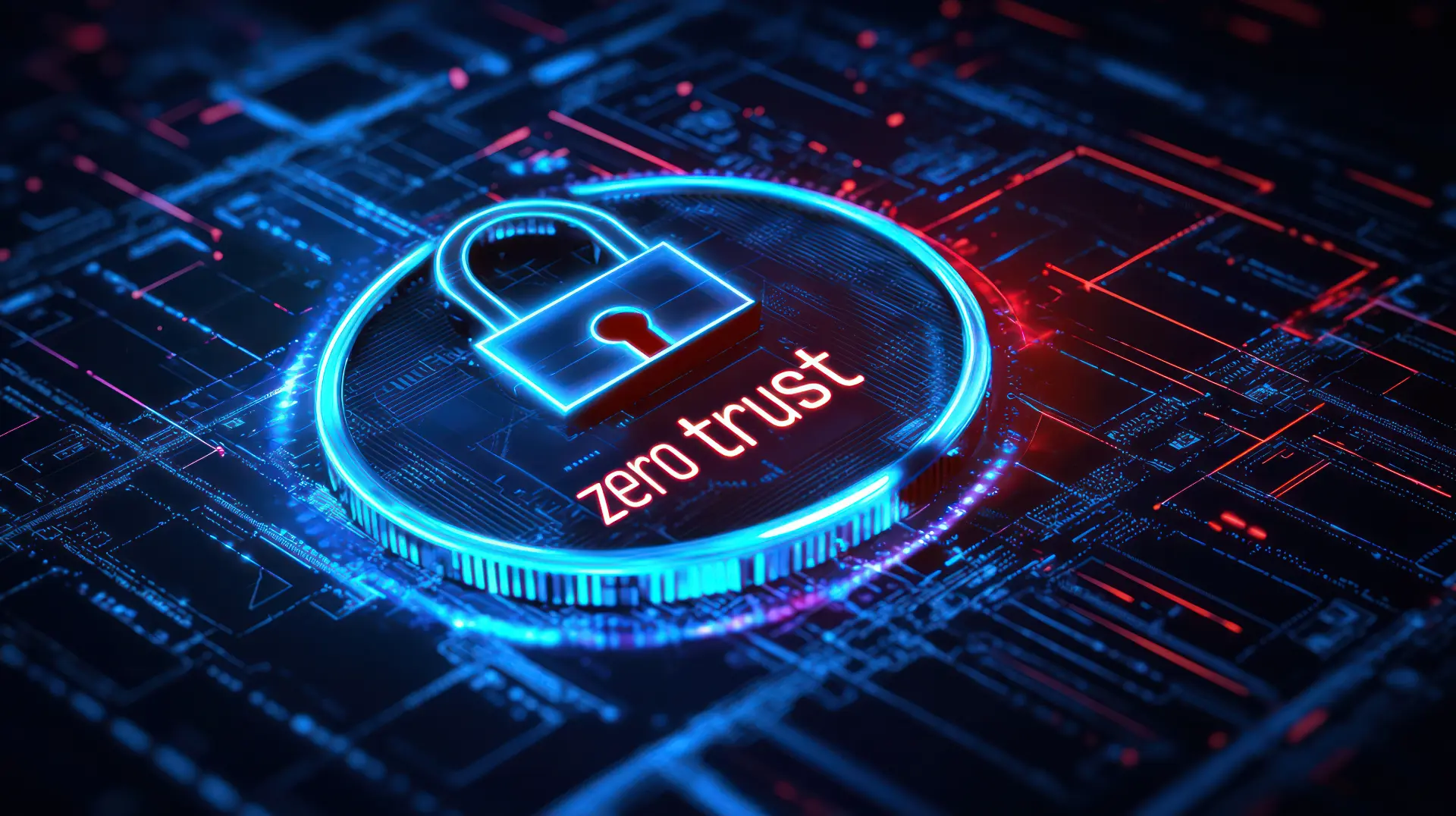Table of contents
- Zero Trust: meaning and origins
- The Zero Trust approach: how it works
- Advantages of the Zero Trust model for companies
- How to implement the Zero Trust model in your organization
- The future of Zero Trust solutions
Modern cyber security demands a radically different approach compared to traditional models. The Zero Trust approach represents one of the best responses to the challenges posed by digital transformation and the increasing number of cyber threats.
But what does Zero Trust mean? This article explores the Zero Trust model, its characteristics, and how to implement effective security solutions to reduce the attack surface and protect sensitive company data.
Zero Trust: meaning and origins
To understand the Zero Trust approach, it is essential to start with its meaning. The term “Zero Trust” was coined by analyst John Kindervag in 2010, with the fundamental principle of “never trust, always verify.” This approach was developed to replace the traditional “castle-and-moat” model, which only protected the network perimeter.
Today, with the rise of cloud-distributed workloads and hybrid corporate networks, Zero Trust architecture focuses on user identity and the continuous verification of access requests.
The Zero Trust approach: how it works
The Zero Trust approach is based on several key principles:
- Continuous authentication
Every access request is verified in real time, regardless of whether it originates from within or outside the corporate network.
- Principle of least privilege
Users are granted only secure access to what they really need.
- Network segmentation
The network is divided to limit lateral movement of potential threats.
- Continuous monitoring
All activities are tracked and analyzed to detect suspicious behavior.
By doing so, the Zero Trust model minimizes the risk of attacks, protects sensitive data, and ensures a security approach based on constant verification.
Advantages of the Zero Trust model for companies
Adopting a Zero Trust architecture offers several tangible benefits:
- Protection of sensitive data
Strict policies ensure that only authorized users can access critical information.
- Reduced attack surface
Segmentation and identity control limit vulnerable areas prone to attacks.
- Security for cloud workloads
With the increase in SaaS applications and hybrid infrastructures, the Zero Trust security model ensures continuous control.
- Improved identity management
Integration with identity management solutions makes it easier to monitor and secure access to corporate assets.
Example
The adoption of Zero Trust solutions by large organizations like Google, which developed the BeyondCorp framework to eliminate the traditional network perimeter.
How to implement the Zero Trust model in your organization
Implementing a Zero Trust architecture requires a gradual, systematic, and tailored approach since every organization has different needs and infrastructures. It is not a plug-and-play solution but a Zero Trust strategy built step-by-step by combining technologies, policies, and processes. Here is a more detailed guide to adopting an effective Zero Trust approach:
Identify critical resources
The first step in implementing the Zero Trust model is to identify the most critical sensitive data, applications and business systems. This process requires a thorough analysis of the corporate network, workloads and business processes:
- Classify resources based on sensitivity and criticality;
- Identify who (human or non-human) needs access to each resource and under what circumstances;
- Highlight vulnerabilities or attack surfaces in your infrastructure.
Example
Financial data, customer information or critical production assets require an especially high level of protection.
Implement Multifactor Authentication (MFA)
Multifactor Authentication is one of the fundamental pillars of the Zero Trust model. It allows users’ identities to be verified using multiple authentication factors, such as passwords, tokens, biometrics, or temporary authentications:
- Implements MFA to protect the most critical business resources;
- Use advanced authentication mechanisms, such as just-in-time access, which grants access only when needed and for a limited time;
- Require step-up authentications for sensitive access requests.
Using MFA greatly reduces the risk of credential compromise and ensures secure access.
Segment the corporate network
Network segmentation is a key element in limiting the lateral movement of an attack. In a Zero Trust environment, the network is divided into isolated micro-segments so that a possible attacker cannot easily move between different areas.
- Partition the network according to sensitive users, devices, and resources;
- Enforces strict access policies for each segment;
- Implement software-defined perimeters that control secure access regardless of user location.
This segmentation makes it more difficult for cyber criminals to move within the corporate network.
Example
A user accessing an HR application should not have access to financial systems.

Monitor user and device activity
The Zero Trust approach is based on continuous monitoring of user, device, and process activity. Every access request must be monitored in real time and analyzed for suspicious behavior or anomalies.
- It implements monitoring solutions that use artificial intelligence and machine learning to detect anomalous activity;
- Constantly monitors the behavior of privileged users and endpoints connected to the network;
- Sets alerts for unauthorized activity, such as attempts to access sensitive data or unusual transfers.
Example
A user who normally accesses a resource from one geographic location might arouse suspicion if they attempt to access it from another area suddenly. This monitoring helps detect potential attacks in real time.
Apply the principle of least privilege
One of the cornerstones of the Zero Trust model is the principle of least privilege, which ensures that each user or device has access only to the resources it needs to perform its activities, nothing more.
- Configures access policies based on attributes such as role, identity, device, or location;
- Limits access to sensitive resources for unauthorized users;
- Uses identity management tools (IAM) to control and verify permissions for each user.
Example
An IT administrator should have access only to systems for which he or she has direct responsibility and for a limited time, thus reducing the possibility of human error or abuse of credentials.
Integrate advanced security solutions
The implementation of a Zero Trust architecture requires the integration of various security solutions, such as:
- IAM (Identity and Access Management) systems for identity and access management;
- PAM (Privileged Access Management) to protect privileged access;
- Endpoint protection solutions to ensure that connected devices are secure and up-to-date;
- Network segmentation technologies and intelligent firewalls to protect network segments;
These solutions work together to continuously verify who can access what, with what device, and under what conditions.
Promote organizational security culture
Finally, adopting a Zero Trust approach is not only about technologies but also about people. Fostering a culture of cyber security within the organization is essential.
- Train employees on security best practices;
- Raises awareness of cyber threats and the risks associated with unauthorized access;
- Implements clear policies on how credentials and devices should be managed.
Creating a “never trust, always verify” mentality among employees is critical to the success of the Zero Trust security model.
The future of Zero Trust solutions
As digital transformation evolves, the Zero Trust security model is becoming an essential requirement for companies. Emerging technologies like artificial intelligence and machine learning are further enhancing access request analysis and activity monitoring.
In the future, adopting a Zero Trust architecture will be crucial to protect critical infrastructures, reduce the attack surface, and ensure secure access in complex and distributed environments.
Questions and answers
- What does Zero Trust mean?
A cyber security model that verifies every access request, internal or external, to ensure reliability.
- What are the principles of the Zero Trust model?
Continuous authentication, least privilege, network segmentation, and constant monitoring.
- Why is the traditional model no longer effective?
The traditional “castle-and-moat” approach is ineffective against internal threats and distributed cloud environments.
- How does Zero Trust protect sensitive data?
By applying strict controls and constant verifications, access is limited to authorized users only.
- What are the main Zero Trust security solutions?
Tools like MFA, IAM, PAM, and network segmentation are fundamental.
- How does it reduce the attack surface?
By segmenting networks and controlling identities, vulnerable areas are minimized.
- Is Zero Trust suitable only for large companies?
No, small and medium-sized enterprises can also benefit from Zero Trust solutions.
- What role does identity management play in Zero Trust?
It is central: verifying identities ensures secure access to critical resources.
- What does lateral movement mean in cyber security?
It refers to a hacker’s ability to move within the network to access critical systems.
- What is the first step to adopting a Zero Trust approach?
Identify critical resources and implement multifactor authentication (MFA).


